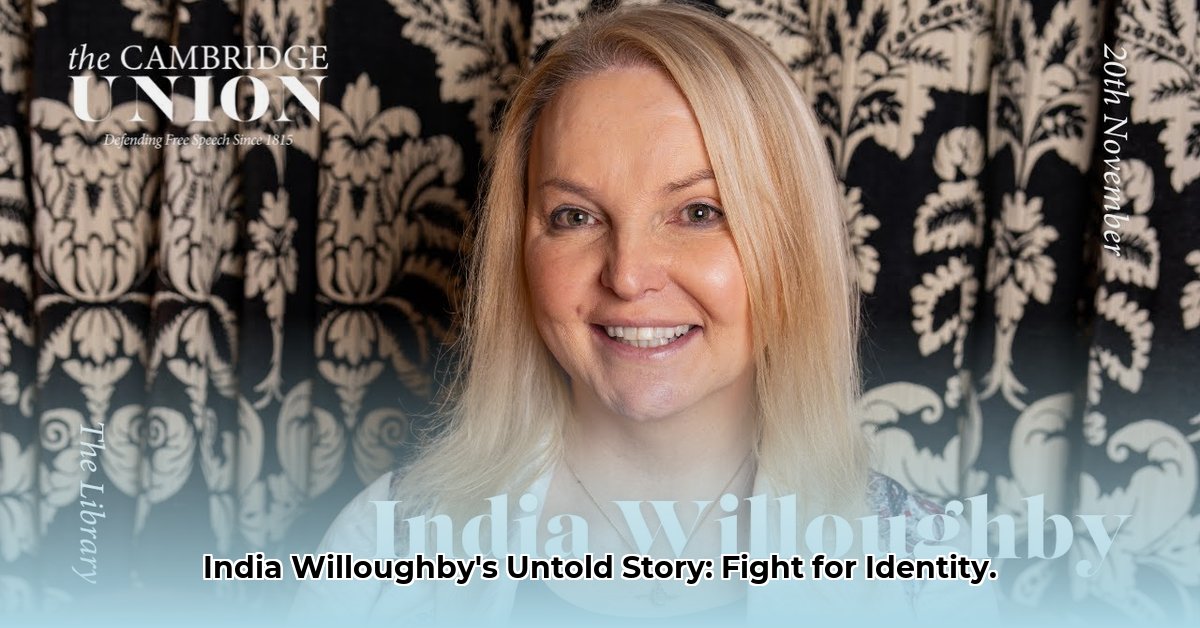
India Willoughby’s story isn't just another news headline; it's a powerful, often heartbreaking, narrative of a woman's journey, a battle fought under intense public scrutiny, and a stark reflection of how far we still need to go in terms of understanding and acceptance. Becoming Britain's first openly transgender national television newsreader was a monumental achievement, a glass ceiling shattered. But this victory was quickly overshadowed by a torrent of online hate – a wave of transphobic abuse that highlighted the systemic failures to protect vulnerable individuals from the venom of online hate. It makes you wonder: how can such progress be so easily undermined?
The double-edged sword of visibility cut deep. Suddenly, India was a symbol, a lightning rod for both admiration and vitriol. Her high-profile position brought much-needed attention to the realities of being transgender in the public eye, but this also made her a target. The intense scrutiny, the constant barrage of prejudice and harassment – this is a reality for far too many transgender people, amplified tenfold when they're in the public sphere. Her experience underscores the systemic failures to protect vulnerable individuals from online hate – a battle against individuals, but also against a system that often seems designed to fail them. How many more India Willoughbys must endure this before we act?
Navigating the media maelstrom proved treacherous. Some lauded her achievements; others focused on aspects of her identity, twisting narratives to sow division and fuel conflict. The ensuing public debate, often fuelled by misinformation and a shocking lack of understanding, demonstrates how easily positive representation can be hijacked and weaponised. It highlights the urgent need for media literacy and responsibility, especially when covering sensitive topics. We need responsible journalism, not sensationalism. Isn’t it time we held the media accountable for their role in perpetuating harmful stereotypes?
India's personal journey is one of immense bravery and resilience. She bravely shared personal experiences, becoming a powerful advocate for transgender rights. But this vulnerability came at a steep price – a toll on her mental and emotional wellbeing. The unrelenting attacks, the constant fear of violence – this cost is often overlooked. It’s a stark reality for many transgender individuals who bravely balance personal life and public visibility. Do we, as a society, adequately support them? The silence is deafening.
Creating a more just world requires a multi-pronged approach.
| Stakeholder | Immediate Action | Long-Term Goals |
|---|---|---|
| Transgender Rights Organizations | Provide immediate support, legal aid, and safe spaces. | Advocate for stronger anti-discrimination laws, improved healthcare access, and comprehensive education programs. |
| Media Outlets | Implement strict guidelines against hate speech & transphobic reporting. | Increase transgender representation; mandatory diversity and inclusion training. |
| Government/Law Enforcement | Improve training on transgender issues & hate crime response. | Strengthen hate crime laws and ensure effective enforcement; create dedicated support units for transgender victims. |
| Social Media Platforms | Develop hate speech detection and removal mechanisms. | Invest in AI-powered moderation; hold platforms accountable for the content they host. |
| Individuals | Educate themselves about transgender issues; challenge transphobic behaviour. | Promote empathy and understanding; actively support transgender rights and inclusion. |
India Willoughby’s story transcends personal narrative; it's a searing indictment of societal failings and a testament to human resilience. Her experiences are a wake-up call – a call for change, empathy, and action. We must answer it.
How to Effectively Combat Online Hate Speech Targeting Transgender Individuals
India Willoughby's journey highlights the brutal reality of online hate speech. Her experience underscores the urgency of finding solutions. How can we create a safer digital space?
The internet, designed to connect, has become a weapon. Anonymity emboldens perpetrators, and algorithms amplify hateful content. This isn't just a technology problem; it's a societal one. We need to address the roots of transphobia.
Here's a multi-faceted approach:
- Strengthen Reporting Mechanisms: Platforms need better hate speech reporting systems; robust human review is crucial.
- Promote Media Literacy: Educate the public to identify and combat misinformation and promote critical engagement on social media.
- Legislative Action: Governments need strong legal frameworks holding perpetrators accountable while protecting free speech.
- Community Support: Build supportive online communities where transgender individuals feel safe.
- Platform Accountability: Hold social media companies accountable for the content they host.
Empathy and allyship are crucial. We need to actively challenge hate speech. This includes supporting transgender individuals, amplifying their voices, and creating a culture that normalises transgender experiences. The fight against online transphobia is ongoing, but by combining technological solutions, policy changes, and societal shifts, we can build a more just and inclusive digital world.
Key Takeaways:
- Online hate speech against transgender individuals has devastating consequences.
- Effective solutions require a multi-pronged approach.
- Improving reporting, promoting media literacy, and enacting strong legislation are crucial.
- Building supportive communities and challenging hate speech are vital.
- A cultural shift towards acceptance is needed.